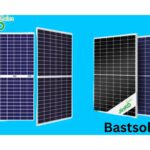Solar Technology: At the rate at which the world is developing today. The shift to modern energy is not just a trend but the need of the hour. Among the various sources of renewable energy, solar technology stands out as one of the most promising and widely adopted. As we grapple with the challenges of climate change and depleting fossil fuels, harnessing solar energy offers a cleaner, sustainable alternative. This article delves into the essence of solar technology, its innovations, benefits, and why it is critical for the future of energy.
What is Solar Technology?
At its core, solar technology refers to the techniques and devices that capture, convert, and utilize sunlight to produce energy. The sun, a massive energy source, emits light and heat that can be transformed into usable energy through various technologies. The two primary methods of capturing solar energy are photovoltaic (PV) systems and solar thermal systems.
Photovoltaic systems: These are perhaps the most recognized form of solar technology. PV systems convert sunlight directly into electricity using semiconductors, typically silicon. When sunlight hits these cells, electrons are knocked loose, generating an electric current.
Solar thermal systems: This technology harnesses sunlight to produce heat. Solar thermal power plants use mirrors or lenses to concentrate sunlight, which then heats a fluid to produce steam. This steam drives turbines that generate electricity.
The Growth of Solar Technology
Over the past few decades, solar technology has experienced significant advancements. Not only has the cost of solar panels dropped, but their efficiency has also increased. Modern solar cells can convert more sunlight into electricity, and large-scale solar farms are now capable of powering entire communities. According to industry experts, global solar capacity is expected to continue growing at an exponential rate, making it a critical component in our future energy infrastructure.
Benefits of Solar Technology
Environmentally friendly: Solar energy is clean and reliable, does not emit greenhouse gases while operating. Unlike fossil fuels, solar technology does not deplete finite resources or pollute the environment.
Energy Freedom: Solar energy is a natural thing, so man is free to meet his energy needs. As solar systems can be installed locally—on rooftops, for example—communities can produce their electricity, reducing reliance on centralized power grids.
Cost-Effective: Although the initial installation of solar panels can be costly, over time, they prove to be a cost-effective solution. Solar technology allows users to generate their electricity, reducing or even eliminating monthly energy bills. Furthermore, government incentives and tax credits in many countries make solar installations more affordable.
Job Creation: The solar industry is a growing field, creating jobs in manufacturing, installation, and maintenance. As the demand for solar technology increases, so too does the opportunity for economic growth and employment.
Innovations in Solar Technology
Solar technology continues to evolve, with new innovations constantly emerging. Some of the most exciting advancements include:
Perovskite solar cells: These are considered the future of solar technology due to their lower cost and higher efficiency compared to traditional silicon-based cells. While still in the experimental stage, perovskite cells are expected to revolutionize solar power production.
Solar storage systems: One of the challenges of solar energy is its intermittency—solar panels only produce electricity when the sun is shining. However, advancements in battery storage technology allow excess energy generated during the day to be stored and used at night or on cloudy days. Systems like Tesla’s Powerwall have made home solar storage a reality.
Building-integrated photovoltaics (BIPV): This innovative technology integrates solar panels directly into building materials, such as windows and roofing tiles. BIPV offers a more aesthetically pleasing alternative to traditional solar panels while providing the same benefits.
Solar Technology Applications
The versatility of solar technology means it can be applied in various ways:
Residential solar systems: Homeowners can install solar panels on these rooftops, reducing electricity bills and contributing to a more sustainable environment.
Commercial and industrial solar: Businesses and factories are increasingly adopting solar energy to lower operational costs and meet sustainability goals.
Solar farms: Large-scale solar farms consist of thousands of solar panels spread over vast areas, capable of powering entire towns or cities.
Off-grid solar systems: In remote areas without access to the main power grid, solar technology provides an independent, reliable energy source.

Solar Technology and the Future
As the world shifts toward sustainable energy sources, solar technology will play an even more significant role in the future of power generation. Countries worldwide are setting ambitious targets to reduce carbon emissions and increase renewable energy capacity. Solar power is expected to be at the forefront of these initiatives, making it a critical component of global energy policy.
Furthermore, as solar technology becomes more affordable and efficient, it will become accessible to a broader range of consumers. Particularly in developing nations where energy access is limited. The combination of solar energy and energy storage systems will also allow for a more stable and reliable power supply, even in regions with unreliable electricity grids.
FAQs
Q1: How do solar panels work?
A: Solar panels consist of photovoltaic cells that convert sunlight into electricity. When sunlight hits the cells, it excites electrons, creating an electric current that can be used to power homes, businesses, and other devices.
Q2: Can solar panels work on cloudy days?
A: Yes, solar panels can still generate electricity on cloudy days, although their efficiency will be reduced compared to sunny days. Modern solar panels are designed to capture diffused sunlight, allowing them to produce energy even in less-than-ideal conditions.
Q3: How long do solar panels last?
A: However, they can continue to produce electricity well beyond their warranty period, although their efficiency may decline over time.
Q4: Is solar energy expensive to install?
A: While the initial installation cost can be high, government incentives, tax credits, and financing options help offset these costs. Over time, solar energy can save homeowners money by reducing or eliminating electricity bills.
Q5: What is the difference between photovoltaic and solar thermal systems?
A: Photovoltaic systems convert sunlight directly into electricity using solar cells, while solar thermal systems use sunlight to heat a fluid, which generates steam to power turbines that produce electricity.
Q6: Can I store solar energy for later use?
A: Yes, with solar storage systems, such as batteries, excess energy produced during the day can be stored and used later, ensuring a continuous power supply even when the sun isn’t shining.
Conclusion
Is at the forefront of the renewable energy revolution, offering a clean efficient, and sustainable alternative to traditional fossil fuels. From residential installations to large-scale solar farms, the versatility and potential of solar power are unmatched. As advancements continue, solar technology is poised to become an even more integral part of our global energy landscape. Helping to combat climate change and provide energy access to millions worldwide.




















